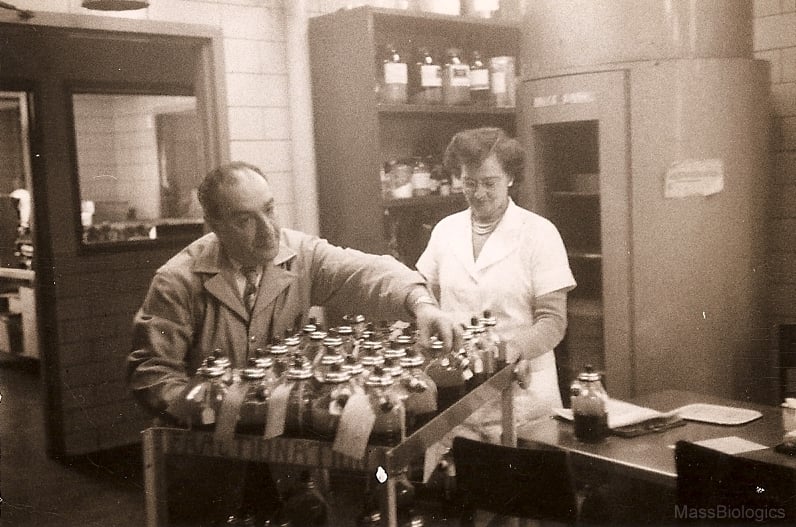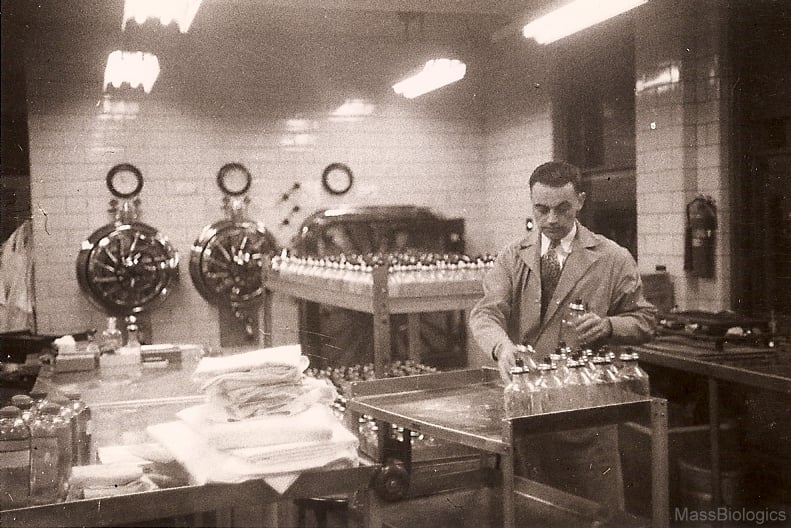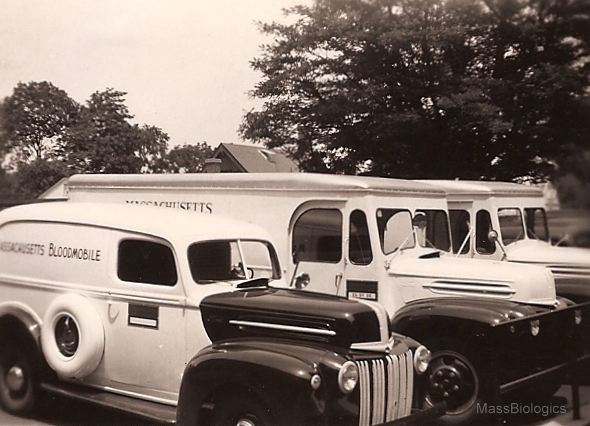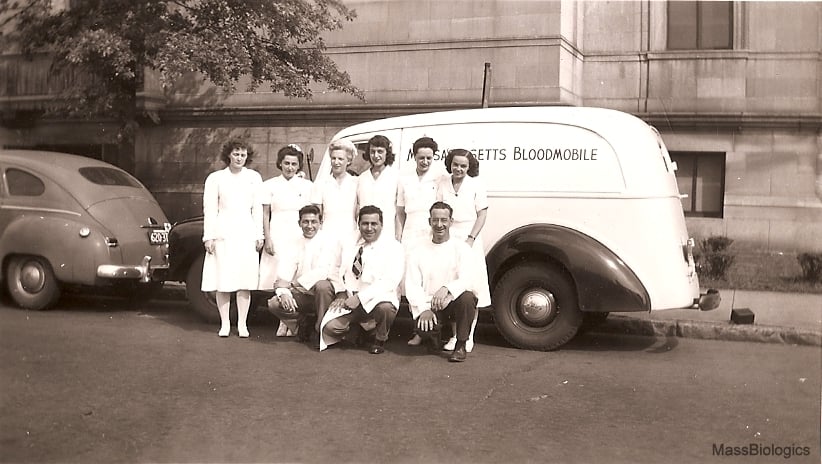The Massachusetts Blood and Blood Derivatives Program and Post WWII

1950.
In 1942 Dr. Robinson entered the Army and Geoffrey Edsall, MD, became Acting Director until 1947, and Director from 1947-1949. During this period and immediately post war, studies directed toward the manufacture of additional products and the addition of the Blood Laboratory became a primary focus. The Massachusetts Blood and Blood Derivatives Program and the Blood Laboratory were authorized by the Legislature in July 1945. Because of the highly technical nature of processing and distributing blood and blood products, a special addition was added to the Biologic Laboratories building on the Bussey grounds in 1946.31 Construction was subsidized by a donation from the Hyams Family Trust.32

Area B134. 1950.
The Massachusetts Blood and Blood Derivatives Program was a reaction to the expanded importance of and increased technical knowledge about blood transfusion, including the war time medical experience which showed the parts, or “fractions” of plasma to be of great medical value.33 The program was designed to collect voluntary blood donations for the processing of blood and whole blood, blood plasma and plasma fractions, and for the free distribution of these products throughout the state. The Massachusetts Blood Program was unique in that it was the first comprehensive statewide blood program. Other states had undertaken the provision of blood plasma, and some counties and cities developed whole blood banks. Only the Massachusetts Blood Program included these as well as the processing and distribution of whole blood, red blood cells, blood plasma and the fractions of blood plasma without charge. The second phase of this program collected blood to be used in fractionation.34

Control testing was begun in 1946 for the Plasma Fractionation Commission. The American National Red Cross utilized the Blood Laboratory from 1948-1951 as a processing lab and pilot plant for work being done by Dr. Edwin J. Cohn at the Harvard University Laboratory of Physical Chemistry. Dr. Cohn developed new fractionation methods which were evaluated at the Biologic Laboratories and subsequently adopted by blood fractionation laboratories throughout the world.35 Additionally, a “bloodmobile” program was developed to aid in the procurement of blood. This program ran from 3 December 1945 to 31 May 1947, during which time its two bloodmobiles visited 153 communities, held 236 clinics, and registered 19,204 blood donors.36

The 1940s and post-war focus was not solely on blood products. In 1941, the Biologic Laboratories introduced a tetanus vaccine. A pertussis vaccine followed in 1949. The most notable achievement, however, was the 1950 introduction of the first combination vaccine, the “triple vaccine”, that was made available for general use in children for immunization against pertussis, diphtheria, and tetanus.37